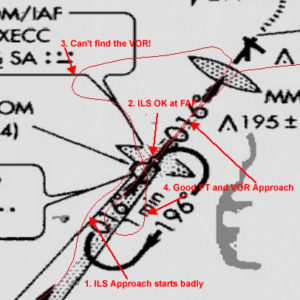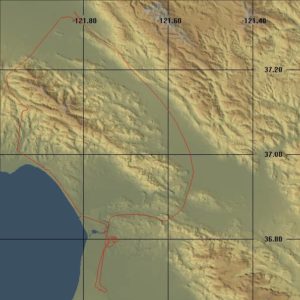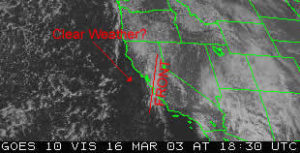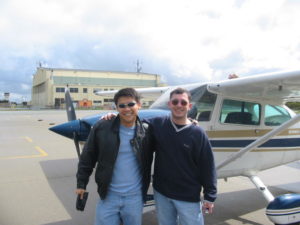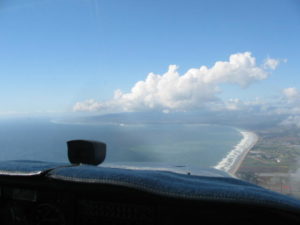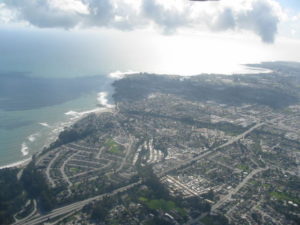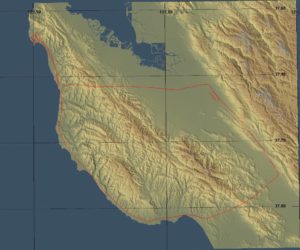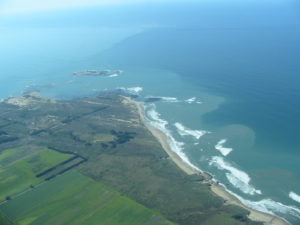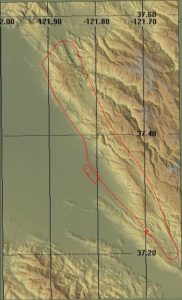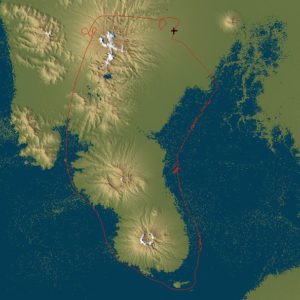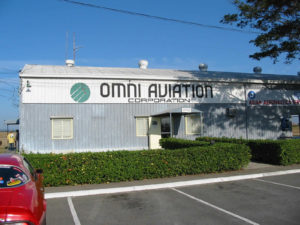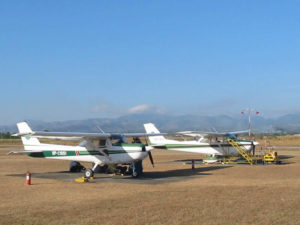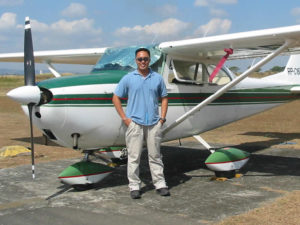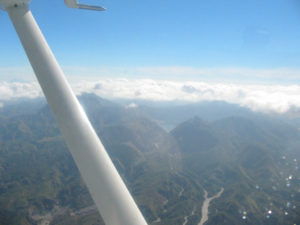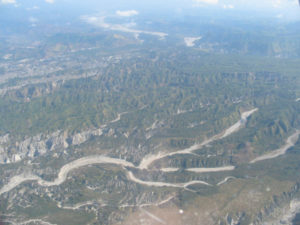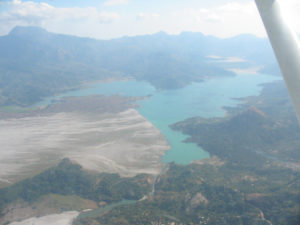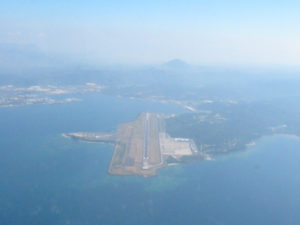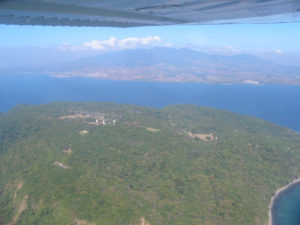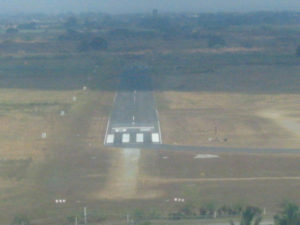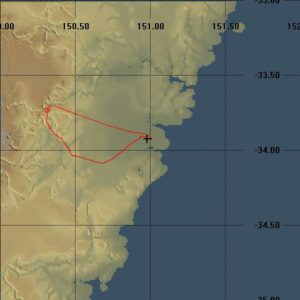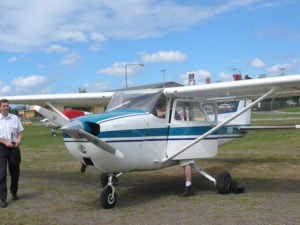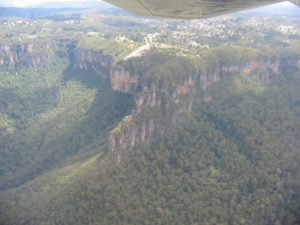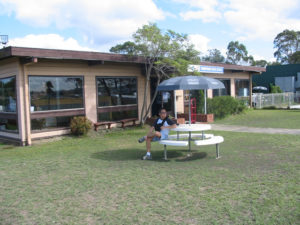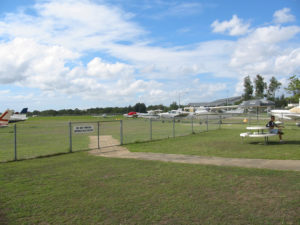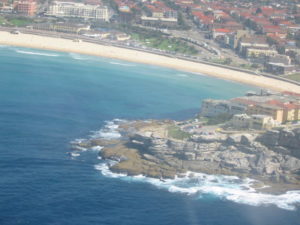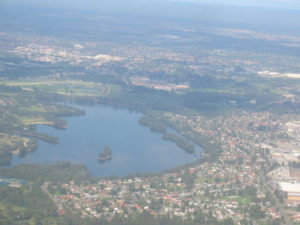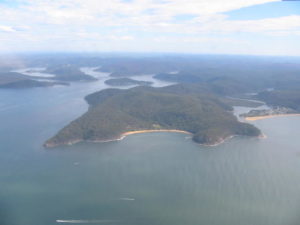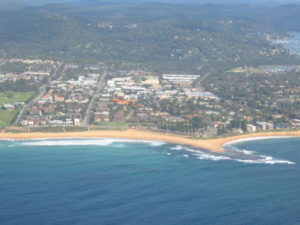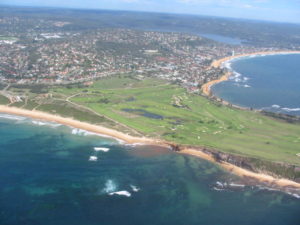So here I am, private pilot ASEL, instrument rated and working towards my commercial ticket. My plans for this year include getting my CFI ticket. I guess, I’m about 6~8 weeks away from the commercial checkride but I need to get the written done and the 10 solo night landings all the other requirements are done. So, I’m thinking lets start looking at the CFI requirements. It turns out there aren’t any additional ones once you have the commercial ticket and instrument rating – except a spin endorsement. So I have to go get some spin training sometime between now and some distant date later this year when I do the CFI checkride. Well, if I’m going to go spin a plane, it might as well be a fun plane like a tail dragger. Then the idea really starts to bite, well if I’m going to spin a tail dragger I might as well learn how to fly one at the same time. And if I learn how to fly a tail dragger then my landings and coordination flying a normal plane will almost certainly improve (I might even land on the runway center line on a more consistent basis) . So if I’m going to learn to fly and land a tail dragger and that is going to make me a better stick & rudder pilot then why wait, why not do it before the commercial checkride and get the benefit for two checkrides! So that is why I’m mixing in a tail wheel checkout with my commercial training, (Oh yes, and the tax refund that will shortly arrive and pay for it). Lastly, I feel that I’m a much better pilot on the ground than in the air. Both checkrides I’ve done (private & instrument) went the same way, great oral test with only a passable flight. To some extent I hope that the focus on the real basic flying skills in a tail dragger will change this.
Now if you want to fly tail draggers in San Jose then the only place to go worth talking about is Amelia Reid Aviation in Reid Hillview Airport (Yes, its the same Reid – Amelia’s father founded the airport). This FBO is a whole different experience from Tradewinds or any of the other flight schools on the field. Their whole fleet are tail draggers – A Champ, a Talyorcraft and a bunch of Citabria’s. The atmosphere is busy and informal. The front office is usually crowded on weekends with pilots, students and CFI’s. The walls are covered with years worth of awards and memento’s, old pictures of planes and pilots. Their motto is “Real Pilots Fly Tail Draggers”, I’m not sure I totally agree, but I wouldn’t be here if I didn’t think there was some truth to the statement.
I had called up on Friday and arranged a flight at 2pm today, Bob Goodwyn was the CFI that happened to answer the call – so first off I’ll fly with him. He told me to arrive early and I did. Bob is a tall blond guy who appears to drink coffee more or less on a continuous basis – his right hand seems to be permanently holding a cup. I thought I drank a lot of coffee – buy I now realize I am a mere bit player in the coffee drinking arena. We spent the first hour just going over the theory of what a plane’s rudder is for and why tail draggers are different. A lot of the stuff I have read about before and from an engineering perspective I understand why the center of gravity being behind the wheels makes the plane dynamically unstable on the ground . For non-engineers this means that taxiing a tail dragger is like pushing a supermarket trolley backwards (or driving a fork-lift which I have never done). Basically, the tail would much prefer to be in front rather than behind you – meaning that given a chance it will try to swing around in a bit of tail dragger revenge know as a ground loop. Apparently tail draggers were invented to punish pilots who think that they are done flying once the plane’s wheels are on the ground. Bob, explained a bunch of maneuvers we would practice – all basically to learn how to fly in a coordinated manner, then it was off to pre-flight the plane.
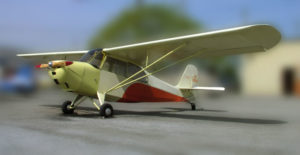 Today we would fly N2805E, the Aeronica Champ – a 1946, tandem two seat plane with a stunning 65HP engine. The student sits in front with the CFI in the back (opposite to the Piper Cub arrangement). The pre-flight is fairly basic – there is not much to check on the plane. Fuel (should be full – there is only 3-hours worth in the tank so the club doesn’t let you leave without a full tank). Oil – 3~4 quarts. Lift the engine cowl to check the oil and generally look at the rather small engine. Remove the cover and check the beautiful wooden prop – tail draggers don’t like brakes – they punish their over-enthusiastic use by nosing over and hitting the prop on the pavement – therefore make sure the previous pilot didn’t damage the prop. Check the controls – breaks (they are not very good) and rudder. Make sure the stick moves everything the way it should. There is no electrical system in the plane – except a radio which has its own battery – you need to do a radio check by calling Ground Control in case the battery is flat. Check the wheels and wings (looking for damage to the wing tips – resulting from a ground loop). Lastly check the tail. Be careful where you push and prod the plane – its made of fabric not metal! Now its time to start the engine. No electrical starter here – its a hand prop job. Its is a complete blast from the past, like being in an old movie. “Breaks”, “Throttle”, “Contact” and Bob swings the prop and the engine starts. Very cool, but I’m happy to be the one sitting in the plane while he does the dangerous bit out front. The cockpit is rather different from what I’m used to. No yoke, instead a real stick, fly with your right hand, left is used for the throttle. No mixture or prop control. No instruments except some engine gauges (oil pressure and temp), an altimeter, an airspeed indicator (rather strangely reading a little over 200 MPH as we sit on the ground) and a slip indicator (the “ball”). There is a compass over on the right which I doubt would be a whole lot of use for navigating anywhere. The radio is on the floor between the rudder peddles, its a bitch to reach down to change frequency. Instead of toe brakes, there are heel brakes, quite a bit harder to work in conjunction with the rudder. That’s it – no distractions in this cockpit.
Today we would fly N2805E, the Aeronica Champ – a 1946, tandem two seat plane with a stunning 65HP engine. The student sits in front with the CFI in the back (opposite to the Piper Cub arrangement). The pre-flight is fairly basic – there is not much to check on the plane. Fuel (should be full – there is only 3-hours worth in the tank so the club doesn’t let you leave without a full tank). Oil – 3~4 quarts. Lift the engine cowl to check the oil and generally look at the rather small engine. Remove the cover and check the beautiful wooden prop – tail draggers don’t like brakes – they punish their over-enthusiastic use by nosing over and hitting the prop on the pavement – therefore make sure the previous pilot didn’t damage the prop. Check the controls – breaks (they are not very good) and rudder. Make sure the stick moves everything the way it should. There is no electrical system in the plane – except a radio which has its own battery – you need to do a radio check by calling Ground Control in case the battery is flat. Check the wheels and wings (looking for damage to the wing tips – resulting from a ground loop). Lastly check the tail. Be careful where you push and prod the plane – its made of fabric not metal! Now its time to start the engine. No electrical starter here – its a hand prop job. Its is a complete blast from the past, like being in an old movie. “Breaks”, “Throttle”, “Contact” and Bob swings the prop and the engine starts. Very cool, but I’m happy to be the one sitting in the plane while he does the dangerous bit out front. The cockpit is rather different from what I’m used to. No yoke, instead a real stick, fly with your right hand, left is used for the throttle. No mixture or prop control. No instruments except some engine gauges (oil pressure and temp), an altimeter, an airspeed indicator (rather strangely reading a little over 200 MPH as we sit on the ground) and a slip indicator (the “ball”). There is a compass over on the right which I doubt would be a whole lot of use for navigating anywhere. The radio is on the floor between the rudder peddles, its a bitch to reach down to change frequency. Instead of toe brakes, there are heel brakes, quite a bit harder to work in conjunction with the rudder. That’s it – no distractions in this cockpit.
Bob releases the tie-downs and chocks and climbs in the back – he takes care of the difficult right turn out of the tie-down spot. Then its my big moment – first time to actually drive a tail dragger on the ground. After everything I’ve heard I’m convinced that a second’s inattention will cause a ground loop – that I’m riding a completely wild animal ready to turn on me in a second. We start to taxi very very slowly – Bob gently reminds me that this taxi way is uphill – perhaps a little more power might get us to the runway before our two hours slot is over. So I cautiously increase the power – nothing bad happens. A little more power, almost up to normal taxi speed – nothing bad continues to happen. Hey! wait a minute! this isn’t bad. This plane is not trying to kill me (or merely badly damage my bank account). It goes in a straight line, it responds to gentle nudges of the rudder, It doesn’t feel in the least bit unstable. Is it all a lie? – a carefully organized conspiracy to make tail draggers appear more difficult than they really are ? Don’t they know I have a web site – that I’ll tell the world their dirty little secret – a tail dragger won’t actually kill you and spit out your head for the presumption of trying to taxi it in a straight line. Well, as you can see my confidence was increasing. Next comes the 90 degree turn onto taxiway Zulu. But wait! the plane happily makes the turn, the tail stays behind me like its supposed to. Confidence continues to increase – I do S-turns as we go down the taxiway just to show who’s boss. Its funny, but the last time I drove a plane down taxiway Zulu fish-tailing it like this was my second ever flying lesson and that was because I didn’t have clue how to work the peddles.
Bob takes care of the turn into the run-up area and we do our engine checks. There is not much to check other than carb heat and mags. Then the turn-out to the runway threshold. Bob, talked quite a bit in the pre-flight briefing about how tail draggers like to weather vane – so they don’t like turning their tail into the wind (which is exactly what you are trying to do after a run-up facing into the wind turning to face downwind to get to the runway). A little quick work on the breaks and rudder and Bob makes the turn look easy. We are cleared for take-off on 31L and Bob tells me he will work all the controls except the rudder peddles – that’s my job. The take-off is a quick swerve one way, stamp on the rudder and swerve the other way – then we’re up. Bob comments that its not that bad for a beginner – we stayed on the runway, if not on the center line. Bob, gives me all of the controls as we climb out – the turbulence is really bad the plane is yawing from side to side, the wings rolling one way then the other like a drunken seagull. As we climb on the downwind I ask Bob if it is really this bouncy or is it just me. He sardonically answers, “It’s mostly you”. By 3000’ the “turbulence” is finally easing, I have discovered that leaving the controls alone is a good way to get the plane to behave. You need only a very light touch – its not a Skylane. I start to notice the view, wow! I’m surrounded by windows the visibility is fantastic. This is nothing like anything I’ve ever flown before. The seat is high up, its easy to see over the nose, there is no instrument panel in the way. I’m surrounded by sky and it is way cool. This feels like really flying.
We level off about 3,500’ and over Lake Anderson start our maneuvers. First off – feet off the rudders and bank the plane one way then the other. Now, in a Skylane or a Skyhawk as long as you make some attempt at pushing a rudder when you turn the plane pretty much does what its supposed to (that is turn). Even, feet off, you don’t notice much adverse yaw. No so in the Champ! right bank – boom, the nose yaws 30 degrees to the left and she really doesn’t want to start turning. This is an eye opener, I’ve read about adverse yaw, its in the books, but this is the first time I’ve really see it. Then its Dutch rolls – this is a bit like trying to pat your head with one hand and rub your belly with the other at the same time. The idea is to bank one way then the other all the while keeping the nose fixed on some point on the horizon with the rudder. Basically, you work the rudder and aileron in sync but a little out of phase with each other. After five or six rolls you get out of sync and it all goes to hell (the nose starts to swing left and right). I actually do a pretty good job of this for a first timer. Bob tells me that we will pretty much be doing Dutch rolls whenever were aren’t doing anything else. Then we do some steep turns left and right, first at 45 degrees then at 60. This is not too bad – and boy you really feel the 2G’s in the 60 degree turn. We try some forward slips left and right, again not too bad, but the nose really wants to pitch up when you get into the slip. Then a maneuver called fish-tailing, basically yaw the plane left and right with the rudder, but keep the wings level with the ailerons. Another exercise that teaches coordination between rudder and aileron that is kind of the inverse of the Dutch rolls. Then its slipping and skidding turns. This is cool. Again, I’ve read about “flying by the seat of your pants”, the ability to actually feels the sideways force in a slipping or skidding turn (like the force you feel going around a corner in a car). But, I’ve never really noticed it in a plane – until now. First start a turn and leave keep the rudder pressure in – basically use the rudder to force the nose of the plane inside the turn – this is a skid. You really feel the push towards the inside of the turn. Then ease off the pressure on the inside rudder and apply a little outside rudder (not too much or she stops turning) you need a little extra inside aileron to keep turning. Now you feel the slip pushing you sideways to the outside of the turn. Very cool finally I start to understand how to feel the slip or skid with the “seat of my pants”. Lastly we finish off with some stalls, power-off straight ahead and turning. There is no stall horn and the stall break is a little more inclined to have a wing drop compared to the Cessna’s I’ve flown. But stay on the rudder and the recovery is pretty easy, though I probably let the nose drop too far on the recovery (but that is fun too).
We headed back to Reid Hillview, cleared to land on 31L. Bob had me pull the power all the way back and glide in at 60 MPH. I consistently over estimated how far I could glide. In my Skylane, if I’m above glide slope (two white lights on the VASI) within 3 miles of the threshold, then I’ll have to work fairly aggressively to get down and slow up to land. Get far above the glide slope and it ensure a less than pretty landing. All my practice (especially for the instrument and commercial) has been to get on glide slope and ride it all the way down to the surface. I generally keep power until over the threshold, the Skylane will drop its nose and sink like a stone if you pull all the power off, this can make slowing your vertical descent rate over the numbers somewhat interesting. The Champ drops pretty steeply without power as well, so I finally find the point where she will glide to the numbers. I flare a little high and balloon up, Bob adds a burst of power and we settle onto the runway with the stick all the way back landing on three wheels. I feel Bob hit the rudder a couple of times keeping us straight and slowing us up. It was my first “assisted” trail dragger landing. Again, we stayed on the runway, walked away from the plane and get to use it another day. Not too bad. The taxi back to Amelia Reid is a non-event.
So my first tail dragger experience is done. It was a blast, so much fun its hard to believe its legal. I totally, without any reservation urge you to go fly a tail dragger. Even that single lesson has taught me a whole lot about how planes really fly. Concepts like adverse yaw, slips and skids that I had learned but never really understood in real terms were made real today. The Champ seems to amplify the effects (or more likely they have been designed out of more modern training aircraft). I can’t wait to try out some the maneuvers I’ve learnt today in my own plane – I wish I been shown them as part of my Private Pilot training. I know the effects won’t be as pronounced, but now that I know what to look for I’m sure I’ll see them. This tail dragger endorsement is going to be a lot of fun.

